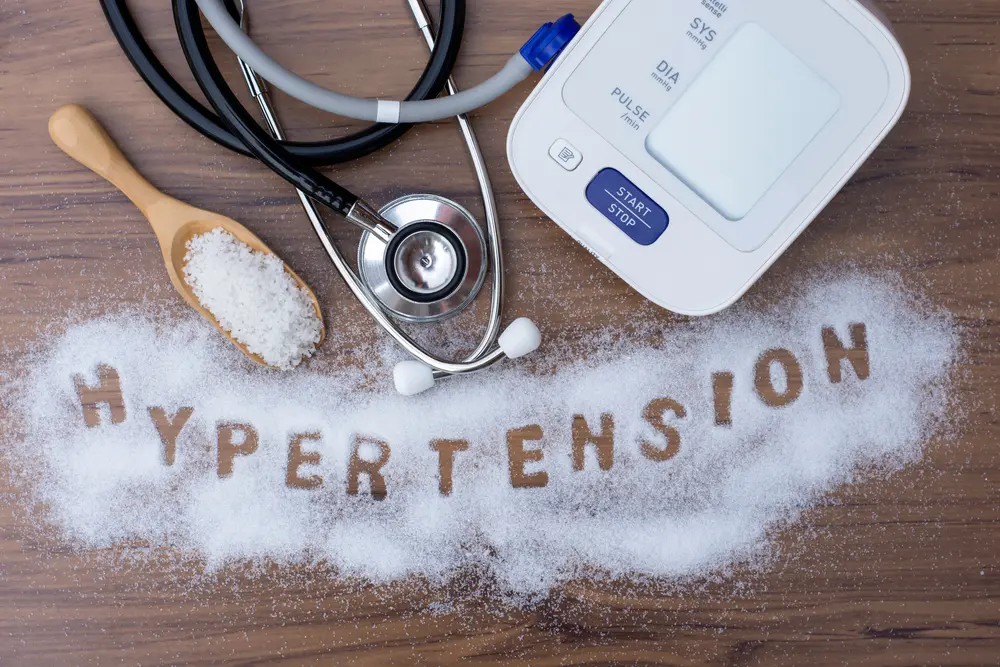“What damage can hypertension do to the whole body?”
Hypertension, popularly called high blood pressure, is a silent ailment. Quietly lurking within our bodies, it may go unnoticed for years while gradually wreaking havoc on our health. It may create a vast array of detrimental effects that can impact virtually every organ and system in the body.
When blood pressure rises above healthy levels, a cascade of events unfolds, gradually undermining our well-being. The cumulative toll on vital organs can be significant.
The heart, the kidneys, the blood vessels, the eyes, the lungs, the brain, and the metabolism are just a few of the several organs and body systems that can get affected. By comprehending the breadth of damage inflicted by hypertension on our bodies, we empower ourselves with the knowledge and motivation to take proactive steps in managing this disease.
So, let’s explore a bit further into the far-reaching effects of hypertension, to understand, prevent, and combat this pervasive health threat.
12 significant ways hypertension affects vital body organs and systems
We’ve listed below just 12 of the most important negative impacts of hypertension. But do be aware that there can be many more.
1. Impact on the heart
According to the American Heart Association (AHA), elevated blood pressure within the arteries places excessive strain on the heart muscles, forcing them to work harder to pump blood throughout the body. Over time, this strain can lead to the thickening and enlargement of the heart, a condition called left ventricular hypertrophy. Additionally, hypertension increases the risk of coronary artery disease by damaging the delicate inner lining of the arteries and promoting the formation of plaque that narrows the vessels and restricts blood flow.
2. Development of atherosclerosis
Rising blood pressure plays a significant role in the development and progression of atherosclerosis, a condition characterized by plaque buildup within the arteries. According to Anastasia V. Poznyak et al., writing in the Frontiers of Cardiovascular Medicine, The inner lining of the arteries gets damaged through the creation of microscopic injuries, initiating an inflammatory process, attracting immune cells and promoting the accumulation of cholesterol and other fatty substances in the injured areas. Over time, these deposits form plaque, which narrows the arteries and restricts blood flow.
3. Damage to kidney blood vessels
Over time, hypertension impairs the kidney’s ability to remove toxins and maintain fluid balance effectively. According to the National Institute of Diabetes and Digestive and Kidney Diseases (NIDDK), the persistent strain on the kidneys can lead to chronic kidney disease characterized by a gradual decline in kidney function. In severe cases, hypertension-induced kidney damage can progress to kidney failure, requiring dialysis or kidney transplantation.
4. Impairment of eye blood vessels
According to the Mount Sinai Health System, hypertension can harm the blood vessels in the eyes, leading to a condition known as hypertensive retinopathy. The blood pressure causes the blood vessels in the retina, the light-sensitive tissue at the back of the eye, to narrow, leak, or become blocked. Various eye complications, such as blurred vision, retinal hemorrhages, swelling of the optic nerve, and even vision loss, can occur.
5. Development of aneurysms
Aneurysms are abnormal bulges in the walls of the brain and heart blood vessels. The blood pressure within the arteries weakens the vessel walls over time, making them more prone to bulging and forming aneurysms. According to Brindles Lee Macon et al., writing in Healthline, the increased stress on the weakened areas can cause the aneurysms to rupture, leading to severe internal bleeding and life-threatening complications.

6. Cognitive impairments
When high blood pressure damages the blood vessels in the brain, it can lead to reduced blood flow and oxygen supply to brain cells. According to Michelle Canavan et al., writing in Frontiers in Neurology, over time, this can result in the development of small areas of damage in the brain called micro infarcts. Hypertension can also cause white matter lesions and impair cognitive abilities, including memory, attention, and executive function.
7. Impact on leg and foot muscles
According to Billy L Luu et al., writing in the Journal of Physiology, elevated blood pressure can impair the proper circulation of blood, oxygen, and nutrients to the leg and foot muscles. This reduced blood flow can result in symptoms such as leg pain, cramping, and fatigue during physical activity, a condition known as claudication. There can also be delayed wound healing and an increased risk of ulcers and infections in the lower extremities.
8. Damage to brain blood vessels
Persistent high blood pressure can result in the narrowing and hardening of blood vessels and reduce blood flow to the brain. According to Harvard Health Publishing, hypertension also increases the risk of developing cerebral small vessel disease, which involves damage to the small blood vessels in the brain. These can increase the risk of transient ischemic attacks (mini-strokes), vascular dementia, and Alzheimer’s.
9. Development of metabolic syndrome
According to John Hopkins Medicine, hypertension and metabolic syndrome often go hand in hand, forming a vicious cycle of adverse health outcomes. Metabolic syndrome is a cluster of conditions that includes high blood pressure, high blood sugar, high cholesterol, and excess abdominal fat.
When chronic illnesses such as obesity, cholesterol, diabetes, and hypertension exist concurrently, and other hereditary factors get added in, it can all have a multiplicative effect on the heart.
A doctor’s help is needed to quickly reduce cholesterol levels, manage blood sugar levels, attend to obesity symptoms, and stall the impacts of high blood sugar.
10. Impairment of lung blood vessels
Adverse effects of raised blood pressure on the blood vessels in the lungs lead to a condition known as pulmonary hypertension. According to NHS UK, the narrowed and thickened blood vessels from hypertension restrict blood flow through the lungs and put additional stress on the right side of the heart, which pumps blood to the lungs. Over time, pulmonary hypertension can result in pulmonary hypertension, breathlessness, and fatigue and even create a heart failure risk.
11. Risk to blood vessels in the digestive system
Prolonged hypertension can damage the blood vessels that supply the digestive organs, such as the stomach and intestines. According to Monica M. Santisteban et al., writing in the AHA Journals, this can result in various gastrointestinal complications, including gastrointestinal bleeding, gut permeability (leakage from small holes in the intestines), ischemic bowel disease (reduced blood flow to the intestines), and impaired digestion.

12. Impact on the skeletal system
According to Hironori Nakagami et al., writing in Clinical Calcium, chronic high blood pressure can harm the skeletal system. Elevated blood pressure levels can increase the risk of osteoporosis, characterized by weakened and brittle bones. Hypertension can disrupt the balance of minerals in the bones, leading to decreased bone density and an increased likelihood of fractures.
In summary
Harm to any part of the body is difficult to bear, but if high blood pressure speedily starts affecting many organs including the brain, and the heart, the results could sometimes become too complex to handle. The human body is a synchronized system of moving parts, all dovetailing into one another. Damage to any part of this configuration from hypertension can lead to rapid negative effect on overall health. The solution is to monitor blood pressure at every doctor visit, especially if hereditary predispositions to the ailment exist. Save your vital organs, your whole body, and your heart. Stay heart-healthy. Be a Zinda Dil.
References
- American Heart Association (AHA). “How High Blood Pressure Can Lead to a Heart Attack.” Accessed: May 19, 2023. https://www.heart.org/en/health-topics/high-blood-pressure/health-threats-from-high-blood-pressure/how-high-blood-pressure-can-lead-to-a-heart-attack
- Poznyak, Anastasia V., et al. Frontiers of Cardiovascular Medicine. “Hypertension as a risk factor for atherosclerosis: Cardiovascular risk assessment.” Accessed: May 19, 2023. https://www.ncbi.nlm.nih.gov/pmc/articles/PMC9441708
- National Institute of Diabetes and Digestive and Kidney Diseases (NIDDK). “High Blood Pressure & Kidney Disease.” Accessed: May 19, 2023. https://www.niddk.nih.gov/health-information/kidney-disease/high-blood-pressure
- Mount Sinai Health System. “High blood pressure and eye disease.” Accessed: May 19, 2023. https://www.mountsinai.org/health-library/diseases-conditions/high-blood-pressure-and-eye-disease
- Macon, Brindles Lee, et al. Healthline. “Overview of an aneurysm.” Accessed: May 19, 2023. https://www.healthline.com/health/aneurysm
- Canavan, Michelle, et al. Frontiers in Neurology. “Hypertension and Cognitive Impairment: A Review of Mechanisms and Key Concepts” Accessed: May 19, 2023. https://www.frontiersin.org/articles/10.3389/fneur.2022.821135/full
- Luu, Billy L., et al. Journal of Physiology. “Blood pressure and the contractility of a human leg muscle.” Accessed: May 19, 2023. https://www.ncbi.nlm.nih.gov/pmc/articles/PMC3936376/
- Harvard Health Publishing. “Blood pressure and your brain.” Accessed: May 19, 2023. https://www.health.harvard.edu/heart-health/blood-pressure-and-your-brain
- John Hopkins Medicine. “Metabolic Syndrome.” Accessed: May 19, 2023. https://www.hopkinsmedicine.org/health/conditions-and-diseases/metabolic-syndrome
- NHS UK. “Overview – Pulmonary hypertension.” Accessed: May 19, 2023. https://www.nhs.uk/conditions/pulmonary-hypertension
- Santisteban, Monica M., et al. AHA Journals. “Hypertension-Linked Pathophysiological Alterations in the Gut.” Accessed: May 19, 2023. https://www.ahajournals.org/doi/10.1161/circresaha.116.309006
- Nakagami, Hironori, et al. Clinical Calcium. “Hypertension and osteoporosis.” Accessed: May 19, 2023. https://pubmed.ncbi.nlm.nih.gov/23545739/





























